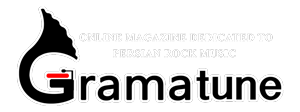
“Last October, the Lexington in London was packed to the brim with people singing along to lyrics that were purely in Welsh. I stood at the back of the room thinking, ‘Oh my god, I’ve been waiting my whole life for this.’”
Gruff Owen is telling NME about the moment his childhood dream came true. Adwaith – a vibrant post-punk trio signed to Owen’s independent record label, Libertino – were in the capital to perform a mixture of new material and tracks from 2018’s ‘Melyn’ (which translates to ‘Yellow’), their Welsh Music Prize-winning debut album. For the Carmarthen-raised Owen, who has spent his life championing Welsh language music – a passion that became a full-time gig when launched Libertino in 2016 – seeing a sold-out crowd outside of Wales react so passionately to the songs was enough to bring a tear to his eye.
Libertino was inspired by regional labels of the past, including the influential Postcard Records (Orange Juice, Josef K). An increasing global interest – with regular orders from fans in both the US and mainland Europe – means that Owen’s label has recently expanded to house over twenty acts, the most in its history. It has also grown to span a multitude of genres, from radiant indie-rock (SYBS, Papur Wal) to exploratory modern soul (Eädyth).
“As a native Welsh speaker, seeing young, new, exciting bands find success through using the language is an emotional thing for me,” he says. “What we have with this new generation of musicians is that they’re owning what they’re doing – no one is embarrassed by the complexity of the language. It’s really progressive, and the world around us is finally starting to acknowledge that.”
For the current, impassioned wave of Welsh-speaking musicians, there are many dimensions at play – nostalgia, rediscovery, breaking down stereotypes – but one thing is clear: absolutely nothing is off limits. The roots of the music – large male voice choirs, and traditional caneuon gwerin (folk songs) – have paved the way for young artists to not only incorporate Britain’s oldest language into their art, but to twist it into exciting new shapes. Adwaith have tackled US political tensions on ‘Newid’; Melin Melyn, meanwhile, are offering a musical representation of stories that need to be documented and shared before they disappear. Last year, the Cardiff-via-London band sang about the mid-19th Century riots that took place in rural west Wales on jangly single ‘Rebecca’.
This collective determination to both preserve and expand the culture has forged an environment where Welsh language music can truly thrive. It also demonstrates a major progression from the late 1990s ‘Cool Cymru’ explosion, a scene that included bands such as Stereophonics, Catatonia, Super Furry Animals and Manic Street Preachers. Though the aforementioned artists aided in locating their Welsh heritage in a global industry, the majority of their songs were in English, meaning that Welsh language music missed a chance to truly flourish on an international scale. Yet a new generation that has never internalised a hesitation towards using the language may be rectifying that.
Dydd Miwsig Cymru (Welsh Language Music Day) is an annual celebration of the music that is being made in the country’s native tongue. Founded in 2013 by former Radio 1 DJ Huw Stephens – who is also the brains behind Sŵn, an inner-city festival that sprawls across several Cardiff venues each October – the event hosts gigs across Wales to promote acts from a wealth of genres, and encourages schools, shops and offices to play music sung and rapped in Welsh. It’s also part of a nationwide initiative to see a million people speaking Welsh by 2050, and has previously seen its celebrations spread as far as Brooklyn and Budapest.
For the organisers behind this year’s Dydd Miswig Cymru (February 4), making the minority language more visible beyond its home country is imperative. The figures back up their mission, too: in 2021, it was reported by language-learning app and research company Duolingo that Welsh has become the fastest-rising language in the UK, which is set to see an 44% increase of users taking it up year-on-year.
“The Welsh language music scene is varied, so a day like Dydd Miwsig Cymru brings everyone together and reminds us and the world that the Welsh language is not only still alive, but is being used every day by fantastic musicians,” says Stephens. “It’s a day to shine a spotlight on our music makers, the gig promoters and the labels, and introduce new people to the language.”
In a world that is becoming increasingly genreless, there’s certainly something refreshing about artists proudly using Welsh to transcend language, culture and borders. And this year’s event feels monumental, as its stars are reaching new heights. 2021 was something of a real breakthrough for Melin Melyn, despite the pandemic. The six-piece, who featured in the NME 100 2022, released their debut EP ‘Blomonj’ – a colourful six-track effort that explored Celtic folklore over woozy psych-pop – in August, which led to regular BBC Radio 6 Music airplay and a triumphant set at Dorset’s End Of The Road the following month.
The group fondly recall how the festival crowd “spilled out ten rows” deep into the sunshine, and the buzz generated from their set even resulted in secret set rumours. “It was a real crossover moment,” says lead vocalist Gruff Glyn. “People were wearing our t-shirts and knew the songs, and it made us realise that, for the first time, we’re finding loads of great support on both sides of the [Severn] bridge.”
Guitarist Will Barratt continues: “In the past, people have asked us why we sing in Welsh at our gigs, but now fans will come up to us after our sets and tell us that they started learning the language because of us. It’s really life-affirming.”
Another artist using her growing platform to introduce a new audience to the Welsh language is Ani Glass. For the electro-pop musician (real name Ani Saunders), part of the appeal of singing in Welsh is the wider culture that surrounds it, particularly the communities it brings together. In recent years, festivals such as the aforementioned Sŵn, plus Cardiff’s Wales Goes Pop and Wrexham’s Focus Wales have given Welsh artists a platform to collaborate with each other. Saunders thinks that these events are paramount to rising musicians across the country, and “part of a wider journey that we’re all going through about identity, and how we best express that.”
But despite her popularity – Saunders won the Welsh Language Album of the Year in 2020 for her scintillating debut full-length effort, ‘Mirores’ – the embrace of her music has not always been plain-sailing. “When I first started making music in Welsh, I think I was seen as a bit of a novelty act because I was doing something really different to everything else that was out there,” she explains. “But more than anything, I enjoyed changing people’s perceptions of what Welsh language music can be.”
“People started learning the language because of us. It’s really life-affirming” – Will Barratt
Stefan Dafydd, frontman of hardcore six-piece Breichiau Hir says that, via the accessibility of streaming, young people are now actively seeking out bands who are pushing boundaries and have something to say. In his day job as marketing manager of iconic Cardiff venue Clwb Ifor Bach, he has seen a “seismic shift” in the popularity of Welsh language music: “Welsh-speaking bands are starting to appear on the same bills as acts that sing in English, which wasn’t the case even five years ago. People are definitely more accepting of it,” he says.
“It used to be bonkers,” he continues. “You’d see line-ups with a folk artist, and then a drum ‘n’ bass act, then a psych-pop band – all on the same bill, just on the basis that they were Welsh language artists. But now we’re seeing younger crowds really want to engage with these acts, regardless of whether they wholly understand the language or not.”
Richard Samuel of Beacons Cymru, a grassroots initiative for 16-25 year olds looking to enter the music industry, agrees: “Young people are playing a vital role in the Welsh music scene, bringing in new ideas and breaking down the misconceptions of Welsh language music being just folk.”
Welsh language music underwent its first major surge of global popularity as the aforementioned ‘Cool Cymru’ wave infiltrated the mainstream. Super Furry Animals bridged the gap between old and new when their fourth record, 2000’s ‘Mwng’, charted in the Top 20, and went on to become the biggest-selling Welsh language album of all time. In a four-star review, NME described frontman Gruff Rhys’ use of Welsh as “beautiful”, and “a perfect mirror to their musical mix of friction, space and softness.”
Though ‘Mwng’ was a great commercial success, for many of the Cardiff group’s peers – who mostly sang in English – ‘Cool Cymru’ was little more than a convenient label for a scene that was based purely on the geography of the bands involved, rather than shared sounds and influences. It was understood widely at the time that Welsh-speaking artists might make waves in Wales, but to non-speakers, their music was insular and unlikely to export far beyond the border.

“There’s always been a lack of confidence in the Welsh music scene, particularly after ’Cool Cymru’. It’s almost as though we’ve always been insecure in ourselves, and have instead waited for outside recognition, which is really not healthy,” says Adwaith drummer Heledd Owen.
“When we were younger, we thought we’d get more opportunities if we wrote in English, just like the biggest hits from the Welsh bands that came before us,” continues lead vocalist Hollie Singer. “But now we’ve learned to have faith in our Welshness, and not be afraid to use the language. I’m not the best Welsh speaker, but learning it has been very therapeutic and grounding.
Why? “Because we’re using the language in a different way; we sing as we would speak naturally. In the past, a lot of Welsh music has usually been about using the language ‘correctly’, where every mutation had to be perfect,” she says. “Like so many other young bands, we don’t want to exclude less confident speakers of the language from enjoying our music.”
Beacons Cymru’s Alexandra Jones believes that, by avoiding the use of “perfect, textbook Welsh”, bands like Adwaith are promoting inclusion and forging “a healthy and thriving ecosystem that has the potential to bring Wales to the forefront of global music.” Last year, for example, we saw excellent releases from Sister Wives, an industrial-laced quartet that explore spirituality and witchcraft in their music, and Guinea-born N’famady Kouyaté, who reworks traditional west African music with lyrics in Welsh and Malinké.
“We don’t want to exclude less confident speakers of the language from enjoying our music” – Hollie Singer
Welsh-speaking artists may be quietly making some of the most exciting and experimental music of the moment, but there is no escaping the fact that there’s a long way to go. “The moment I’ll feel like we’ve achieved what we are all working towards is when what we’re doing is not labelled solely as ‘Welsh language music’; it’s music that shouldn’t be catergorised by region, country or identity,” says Owen.
However, he believes that this year’s Dydd Miwsig Cymru could be a galvanising moment for emerging Welsh language artists. “[The event] is solely about uplifting the next wave of Welsh bands, and encouraging them to continue to share the stories and myths that we have built our culture on.”
Glyn concurs: “We’re never going to stop writing and creating songs in Welsh. We’ll carry on, and so will the generations of bands after us. In terms of longevity, this is unstoppable. Now it’s just up to other people to wake up and enjoy our music.”
Radar Roundup: sign up and get our weekly new music newsletter
The post Cool Cymru 2.0? Meet the new bands reviving the Welsh language appeared first on NME.






